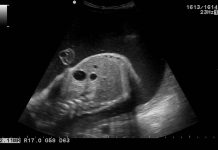As new parents, it’s natural to be worried about every little detail when it comes to your baby’s health. One thing that can cause concern is spotting red or purple dots on your baby’s skin. These dots are called petechiae, and they can be a sign of a potential health issue. In this article, we will discuss the causes, symptoms, diagnosis, treatment, and prevention of petechiae in babies.
In This Article:
- Causes of Petechiae in Babies
- Symptoms of Petechiae in Babies
- When to See a Doctor?
- Diagnosis of Petechiae in Babies
- Treatment for Petechiae in Babies
- Prevention of Petechiae in Babies
Causes of Petechiae in Babies
Petechiae are tiny, pinpoint spots that appear when blood vessels break and bleed under the skin. There are several reasons why petechiae can occur in babies, including:
Trauma
The most common cause of petechiae in babies is trauma or injury. This could be due to a fall, a bump, or even excessive pressure on the skin. The tiny blood vessels under the skin can break, causing petechiae to appear.
Infection
Certain infections, such as meningitis, sepsis, and strep throat, can cause petechiae in babies. These infections can lead to inflammation and damage to blood vessels, resulting in petechiae.
Allergies
Some babies may develop petechiae as a result of an allergic reaction. This could be due to food allergies, medication allergies, or even allergies to certain fabrics or materials.
Blood Disorders
In rare cases, petechiae in babies may be a sign of an underlying blood disorder, such as leukaemia or idiopathic thrombocytopenic purpura (ITP). These conditions can affect the body’s ability to clot blood properly, leading to petechiae.
Symptoms of Petechiae in Babies
Skin Spots:
The most obvious symptom of petechiae in babies is the appearance of tiny, flat, pinpoint spots on the skin or mucous membranes. These spots may be red, purple, or brown in colour.
Fever:
If petechiae are caused by an infection, babies may also experience a fever, along with other symptoms such as vomiting, diarrhea, and lethargy.
Pain:
In some cases, babies may experience pain or discomfort in the area where the petechiae have appeared.
Other Symptoms:
Depending on the underlying cause of petechiae, babies may also experience other symptoms such as swollen lymph nodes, difficulty breathing, or a rash.
When to See a Doctor?
Petechiae that appear suddenly and in large numbers: If your baby develops petechiae all over their body in a short period of time, it could be a sign of a serious infection or bleeding disorder. In this case, it’s important to seek medical attention immediately.
Petechiae accompanied by other symptoms: If your baby has petechiae along with a fever, lethargy, or difficulty breathing, it may indicate a more serious condition and require prompt medical attention.
Petechiae that don’t go away: If your baby’s petechiae don’t disappear within a few days, it’s best to have a doctor examine them to determine the underlying cause.
Petechiae caused by trauma: If your baby has been injured and develops petechiae as a result, it’s still important to have a doctor examine them to rule out any underlying conditions that could be contributing to the bleeding.
Diagnosis of Petechiae in Babies
Petechiae are small, flat red spots that appear on the skin. They are caused by bleeding under the skin and can be a sign of a serious condition. If you notice petechiae on your baby’s skin, it’s important to seek medical attention right away.
Your healthcare provider will perform a physical exam and ask questions about your baby’s symptoms. They may also order blood tests and other diagnostic tests to determine the underlying cause of the petechiae.
Some common causes of petechiae in babies include viral infections, bacterial infections, and blood disorders. Once the cause is determined, your healthcare provider will recommend the appropriate treatment.
Treatment for Petechiae in Babies
Treatment for Viral Infections
If your baby’s petechiae are caused by a viral infection, treatment will focus on managing the symptoms. This may include using over-the-counter pain relievers and fever reducers, providing plenty of fluids, and getting plenty of rest. Your healthcare provider may also recommend antiviral medications in some cases.
Treatment for Bacterial Infections
If petechiae are caused by a bacterial infection, your healthcare provider will prescribe antibiotics to treat the infection. It’s important to give your baby the full course of antibiotics as prescribed, even if the symptoms improve before the medication is finished.
Treatment for Blood Disorders
If petechiae are caused by a blood disorder, treatment will depend on the specific disorder. Your healthcare provider may recommend blood transfusions, medications, or other treatments to manage your baby’s condition.
Watchful Waiting
In some cases, petechiae may be harmless and go away on their own. Your healthcare provider may recommend watchful waiting if they do not suspect an underlying condition. During watchful waiting, it’s important to monitor your baby’s condition closely and report any changes to your healthcare provider.
Prevention of Petechiae in Babies
While it’s not always possible to prevent petechiae, there are some things you can do to reduce your baby’s risk. These include:
Preventing injuries
Babies are naturally curious and love to explore their surroundings, but this can lead to accidents and injuries. Make sure your home is baby-proofed, with sharp edges covered and dangerous items out of reach.
Maintaining good hygiene
Make sure you’re keeping your baby’s skin clean and dry, and avoid using harsh soaps or lotions that can irritate their skin. If your baby does develop petechiae, avoid scratching or picking at the spots, as this can lead to infection.
Getting vaccinated
Some illnesses, such as meningitis and measles, can cause petechiae as a symptom. By vaccinating your baby, you can help protect them from these illnesses and reduce their risk of developing petechiae.
Conclusion
Petechiae in babies can be a sign of a potential health issue, but they are not always cause for alarm. If you notice petechiae on your baby’s skin, it’s important to contact your healthcare provider right away. They will be able to determine the underlying cause and provide appropriate treatment. By taking steps to prevent petechiae, you can help keep your baby healthy and happy.
Sources:













